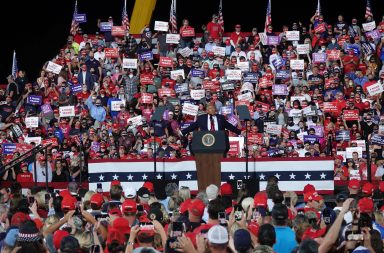An Australian program that “recycles” infrastructure to public-private partnerships and frees up capital for new projects is one model the Trump administration is exploring to beef up US needs.
Two of President Trump’s good friends, both well-respected New York developers and co-chairs of his infrastructure council, Steve Roth and Richard LeFrak, laid out some of their thinking at an infrastructure forum on Monday.
“We were chosen because both of us know how to get things done,” LeFrak said. It also doesn’t hurt that both have the president’s “ear,” from time to time, he said to laughs, so “if that means the commission will have some authority, that’s the authority.”
But project time lines that can now stretch to a decade need to be shortened, LeFrak said, in line with Germany, Canada and Sweden — where it takes just six months from proposal to permits.
“Not that we have to compromise our environmental standards; it’s not that we have to compromise any of the things that are important to people,” LeFrak said, which should be a relief to those worried about birds and bees. They do want all parties to “voice their opinions” and come out “with a decision that makes the best sense for everybody.”
Both Roth and LeFrak, who spoke on different panels during the forum at Bloomberg headquarters, said they are looking to Australia’s infrastructure investment model as one tool to use in the US.
Down Under now gives its states the power to “recycle” excess holdings through long-term leases, which provide funds to develop new “greenfield” infrastructure. Its government has also created a fund that provides a 15 percent sweetener toward the new projects.
Projects ripe for such “recycling” come with their own revenue streams, such as toll roads, airports and ports. For instance, LaGuardia’s Terminal B is being leased to a private consortium that is now rebuilding it and will operate it through 2050.
Critical infrastructure improvements, however, often benefit the public but have no revenue of their own — such as a new Gateway train tunnel under the Hudson River.
“There [is] no question that there are ideas that are global that are better served than what we are doing now,” LeFrak said.
Roth says the federal government can make the approval process more efficient and that sovereign wealth funds, pension funds and other investors are waiting for the right opportunities to “purchase” and operate infrastructure.
As The Post revealed, former NBA star Magic Johnson has created the JLC Infrastructure Fund that is already investing and seeking more such projects.
The $1 trillion the president has proposed to invest across the country may only require $200 billion or less in equity because of the layers in the projects’ capital stacks.
“It is significant but the actual investment would be less because of the multiplier effect,” Roth said.
Unlike the states, he observed, the federal government doesn’t have to have a balanced budget and has no balance sheet. Because every dollar is an expense, there is a disincentive toward maintaining what is already there.
“There is no glory in maintenance,” Roth said. “There is glory in building and glory in ribbon cutting.”









